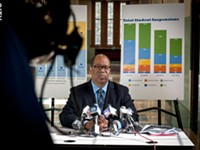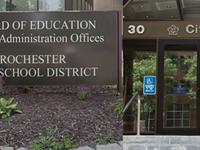Wednesday, October 10, 2012
Charter schools: innovation or mission creep?
Posted By Tim Louis Macaluso on Wed, Oct 10, 2012 at 11:23 AM
Why do two schools about a mile apart with similar demographics, largely disadvantaged African-American and Latino kids, have such different outcomes? What is a charter school like True North Rochester Prep Elementary doing differently from what a traditional city school is doing that leads to dramatically higher student achievement?
Those were some of the questions posed by a recent Democrat and Chronicle article, “Tale of Two Schools.”
Some teachers I’ve talked to immediately point to the absence of special-needs students and English Language Learners at True North. And that is a major difference between True North and School 30. But would it account for True North’s roughly 39 percent difference in reading proficiency or its 60 percent difference in math proficiency?
Some other possible explanations for True North’s success are:
True North schools are extremely structured, and classroom orderliness and discipline are high priorities. That’s not the case in many city schools.
Students have longer days and spend more time on task, about two hours more every school day. The district is just beginning to test this approach.
There’s no union. A teacher can be fired at 4 p.m. on Friday, and be escorted out of the building by 4:15 that day. In the district, it can take a year or more to fire an incompetent teacher.
Also, True North’s culture seems to embrace testing, and its administrators appear to be better at analyzing their own data. The district collects mountains of data, but has difficulty converting it into useful information: getting accurate attendance figures, for instance.
Rachel Barnhart at 13 WHAM raised another interesting question after reading the D&C article: Where does the proliferation of charter schools leave traditional public schools? It’s an important question. The justification for approving charter legislation was to help improve traditional public schools by importing what they’re doing better.
But decades after the first charters opened, it’s hard to see where the transfer of knowledge has been robust enough to warrant developing a parallel public school system of little charter schools. Taxpayers are footing the bill for this experiment, and it’s incumbent upon Commissioner King and the Board of Regents to press for more innovation and transfer of evidence-based success. Or they need to end the mission creep before we inadvertently dismantle the traditional public school system.
Speaking of...
Latest in News Blog
More by Tim Louis Macaluso
-

RCSD financial crisis builds
Sep 23, 2019 -

RCSD facing spending concerns
Sep 20, 2019 -

Education forum tomorrow night for downtown residents
Sep 17, 2019 - More »




